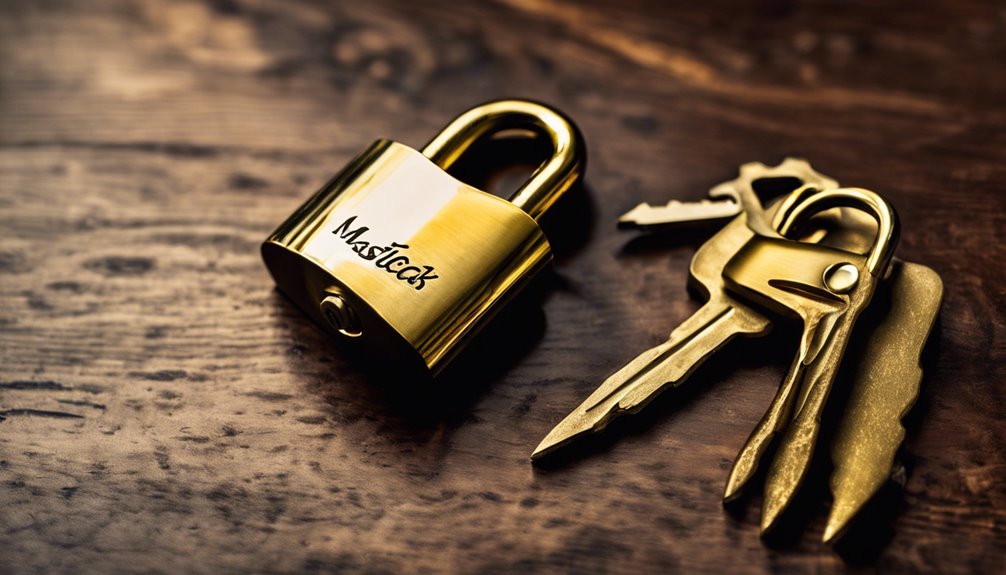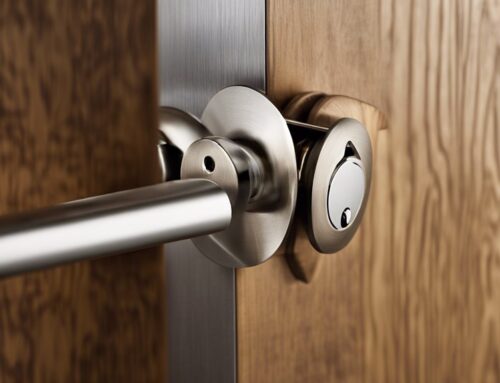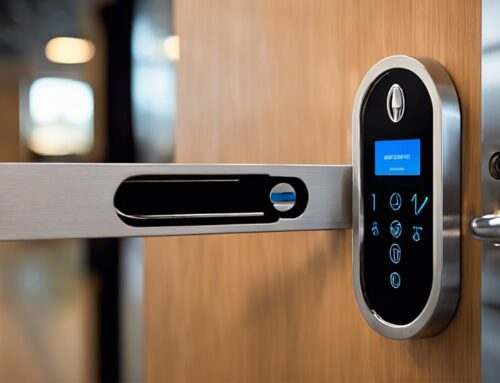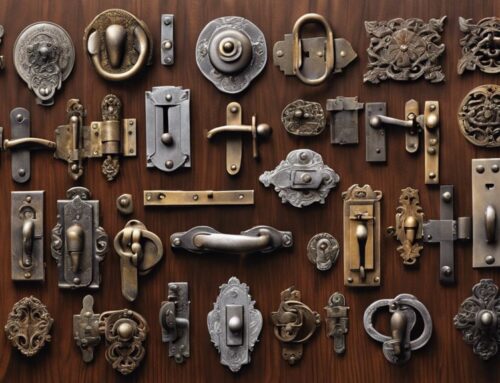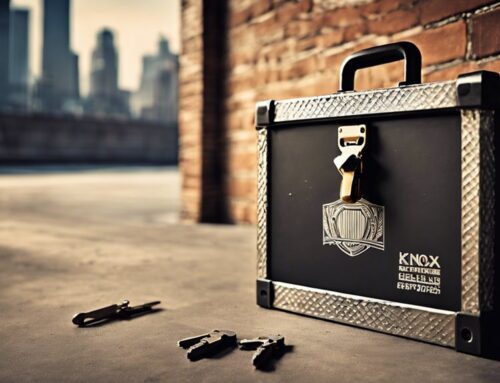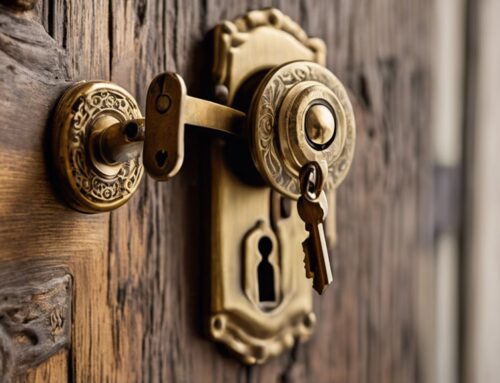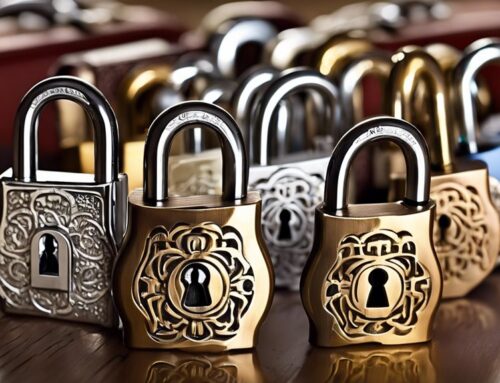When you think about Master Locks, it’s vital to understand both how to open them effectively and how to maintain them for longevity. You might find that mastering the combination technique is easier than you expect, while regular upkeep guarantees your locks function flawlessly over time. However, many overlook essential maintenance steps that could prevent frustrating failures. So, what are the key strategies that could elevate your lock handling skills and secure your peace of mind? Let’s explore the practical tips that can make all the difference.
Key Takeaways
- Clear a combination lock by rotating the dial several times before entering the access code to ensure accurate functionality.
- For digital locks, always check and replace batteries every 6-12 months to maintain consistent performance and prevent failures.
- Use graphite or silicone lubricant to clean and maintain locks every six months, avoiding oil-based products that attract dust.
- Regularly inspect locks for signs of corrosion and damage, especially outdoor models, to prevent unexpected failures and ensure longevity.
- Test lock functionality after any maintenance or battery replacement and consult user manuals for specific troubleshooting steps if issues arise.
Understanding Master Lock Mechanisms
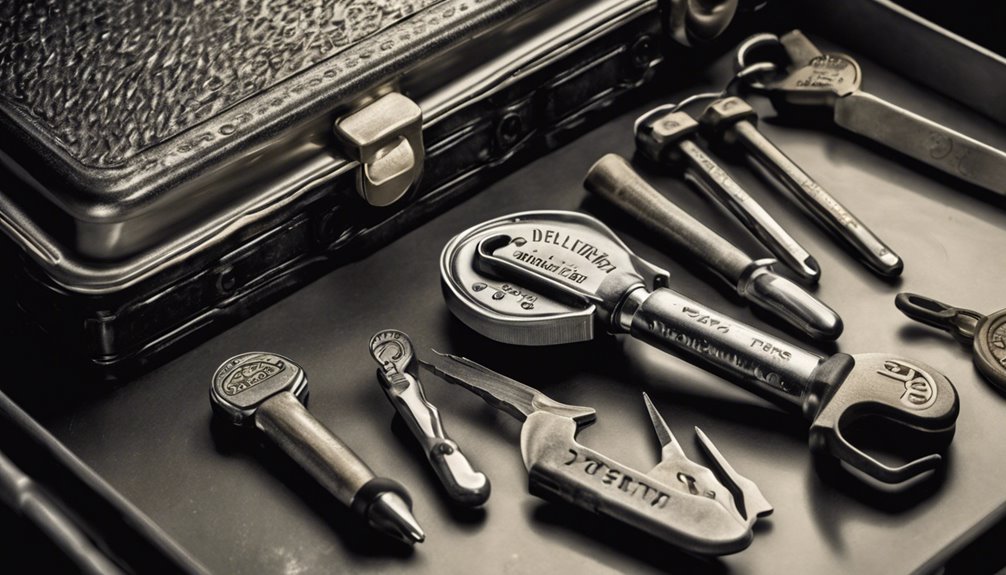
When you’re tackling the intricacies of Master Lock mechanisms, it’s essential to understand how their unique designs work together to offer security. Each lock features a set of pins that align with a specific key’s shape, creating a significant engagement point.
When you insert the correct key, it raises the pins to their shear line, allowing rotation of the cylinder. Additionally, some models employ a dual-keying mechanism, enhancing security by requiring two distinct keys to function. The re-keying process allows for the replacement of pins, ensuring that only new keys will operate the lock, thereby maintaining security.
Understanding the tension applied during the release process is also important; too much or too little can lead to jamming. Familiarizing yourself with these components will deepen your mastery of both the functionality and maintenance of Master Locks, ensuring ideal security and performance. Furthermore, the effectiveness of the locking system heavily relies on the precise arrangement and functionality of the pins, which directly impacts the overall security of the lock.
Types of Master Locks
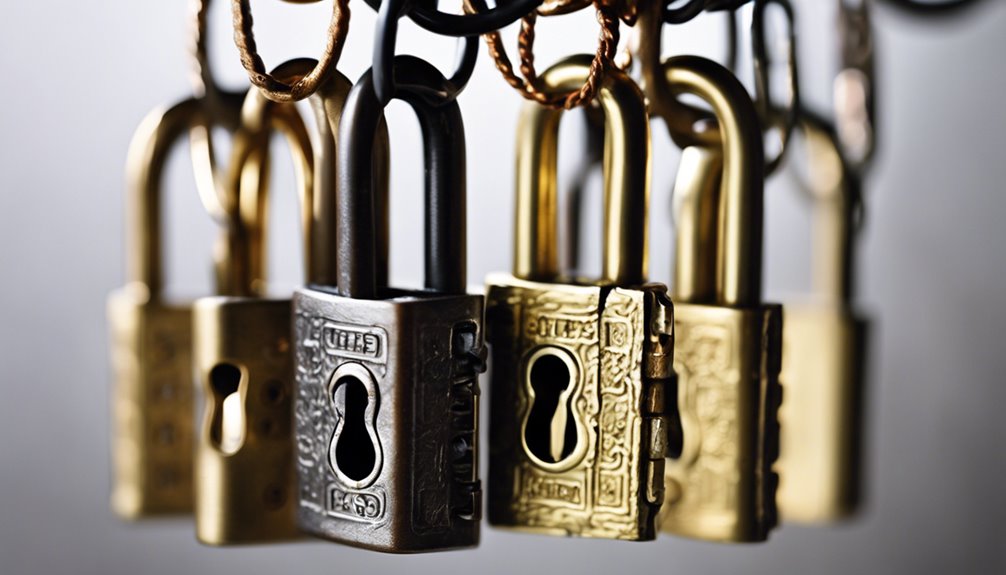
Understanding how Master Lock mechanisms operate sets the stage for recognizing the various types available.
Master Lock provides several categories, each tailored for specific security needs. The most common types include combination locks, padlocks, and key locks. Locksmiths can also assist with these specific locks, which include various designs and security features suited to different applications.
Combination locks operate using a rotating dial or a series of buttons, offering set codes for access. Padlocks are versatile, ideal for securing outdoor gates or storage units, while key locks rely on traditional keys for security.
You’ll also find specialized locks, like the high-security models featuring enhanced mechanisms to resist tampering. It’s essential to consider the right lock type that aligns with your security needs and lifestyle to maximize protection.
Familiarizing yourself with these types not only helps in selecting the right lock but also optimizes your strategy for maintenance and troubleshooting, ensuring long-term security.
Opening Combination Locks
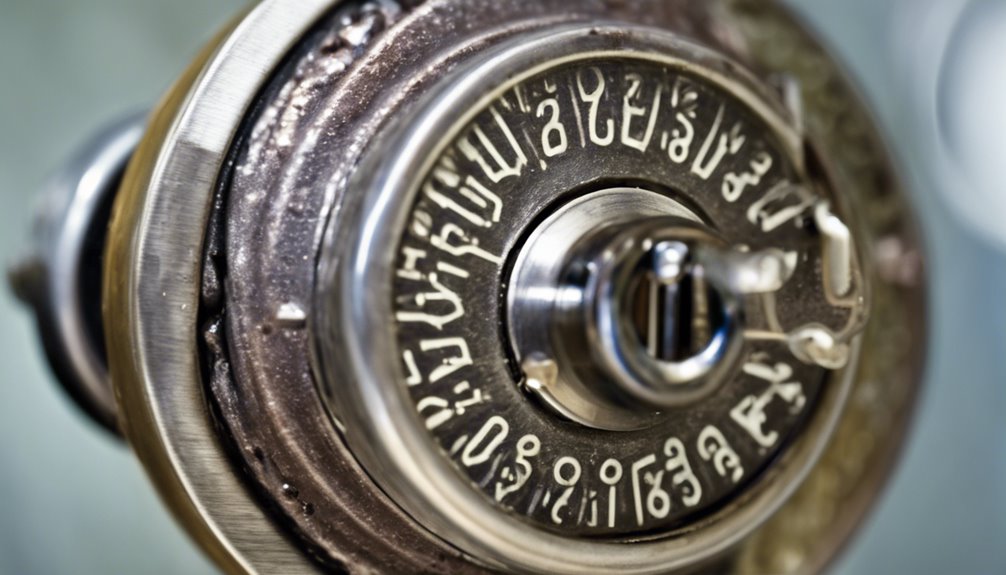
To successfully open a combination lock, it’s crucial to know the correct sequence of numbers and the method for aligning the internal gear mechanism. Follow these steps to master the process:
- Start by rotating the dial several times to clear it.
- Turn the dial to the first number and stop.
- Rotate it right, passing the first number to reach the second.
- Turn the dial left to the third number, but don’t pass the second.
- Finally, pull up the shank while turning the dial once more.
Practicing these steps consistently will help engrain the technique in your muscle memory. Additionally, understanding that the mechanism operates similarly to a broken key extraction can enhance your problem-solving skills if you encounter a malfunctioning lock. Having the right tools, such as specialized equipment for re-keying, can further ensure a seamless repair process when dealing with security devices.
Mastering this skill allows you to safely and efficiently access your locked items without hassle.
Accessing Digital Locks
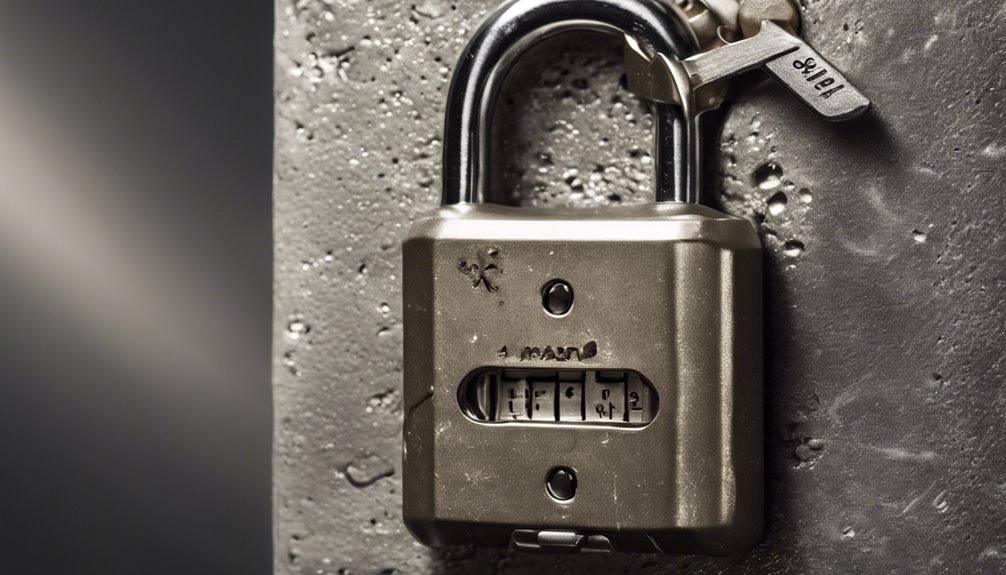
Accessing digital locks, you’ll typically start by entering the primary code to open the device.
If you’re using the Vault Enterprise app, it offers additional features for managing lock access and settings effectively. Additionally, it’s essential to perform regular software updates to ensure optimal performance of your locks, as outlined in security ratings and certifications. Regular maintenance and testing of backup batteries can prevent failures related to power interruptions.
Should you encounter any issues, troubleshooting digital functions can help guarantee reliable operation.
Unlocking With Primary Code
Accessing digital locks via the primary code is a straightforward process that can enhance your security measures considerably.
To guarantee you open your device efficiently, follow these key steps:
- Confirm the lock is powered and in the correct mode.
- Input the primary code accurately—check for any typos.
- Wait for the indicator light to signal that the code is accepted.
- If locked out, consider resetting the lock or consulting the manual.
- Regularly update your primary code to maintain security. Additionally, using robust encryption methods is essential for protecting your smart locks from unauthorized access.
Mastering these steps not only provides immediate access but also enhances your overall proficiency with digital locks, assuring you’re always prepared for future security needs.
Using Vault Enterprise App
Releasing digital locks has never been easier with the Vault Enterprise App, which streamlines the entire process at your fingertips. With its user-friendly interface, you can access digital locks efficiently and securely. Moreover, integrating smart locks offers enhanced security features, making your premises more resistant to unauthorized access. Additionally, smart tech integration allows for a more comprehensive approach to home security.
| Feature | Benefit | Notes |
|---|---|---|
| Remote Access | Control locks from anywhere | Requires internet |
| User Management | Add or remove users effortlessly | Role-based permissions |
| Activity Logs | Track usage history | Useful for audits |
| Real-time Alerts | Instant notifications | Customizable settings |
| Software Updates | guarantee peak performance | Automatic updates available |
Troubleshooting Digital Functions
Even if you encounter difficulties while accessing digital locks, troubleshooting these issues can often be straightforward.
Start by identifying common problems to help you quickly regain access:
- Check the battery: Confirm the batteries are installed correctly and have enough charge.
- Reset the lock: Refer to the manufacturer’s instructions for resetting your lock.
- Inspect connectivity: Verify that your digital lock is properly connected to any networks or apps you use.
- Review the access codes: Double-check that you’re entering the correct code and that it hasn’t been changed.
- Consult the manual: Sometimes, the solution is detailed right in the user guide. Additionally, similar to the case of car locks, knowing how to re-key a lock can be beneficial if you suspect unauthorized access.
Additionally, if you’ve recently changed your access codes, you may need to consider whether to reprogram the lock or not in case you run into issues accessing it.
Maintenance Tips for Master Locks
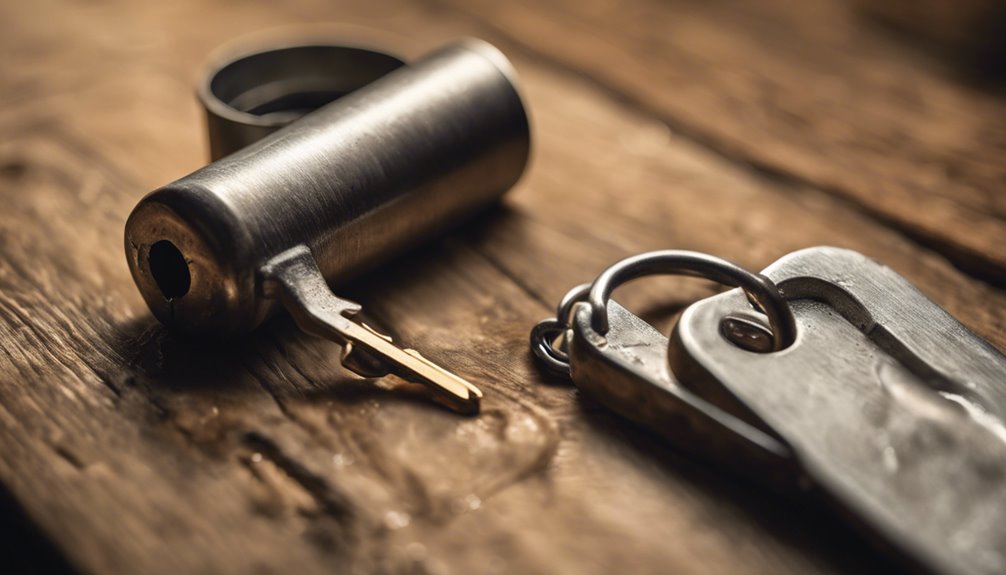
While keeping your Master locks in prime condition may seem straightforward, regular maintenance is essential to confirm their longevity and reliability.
Start by cleaning the keyway to remove dirt or debris using compressed air. Apply a graphite lubricant periodically to the lock to facilitate smooth operation; avoid oil-based lubricants, as they attract dust.
Visually inspect the lock for any signs of corrosion, especially in outdoor environments. If moisture has accumulated, dry the lock thoroughly to prevent internal damage.
Check the shackle for ideal spring tension; replace any weak components immediately.
Finally, store your locks in a cool, dry place to safeguard them from environmental stressors. Proper lock maintenance techniques can significantly enhance the lifespan and functionality of your locks.
Consistent maintenance will confirm your Master locks perform at their best for years to come.
Battery Replacement for Electronics
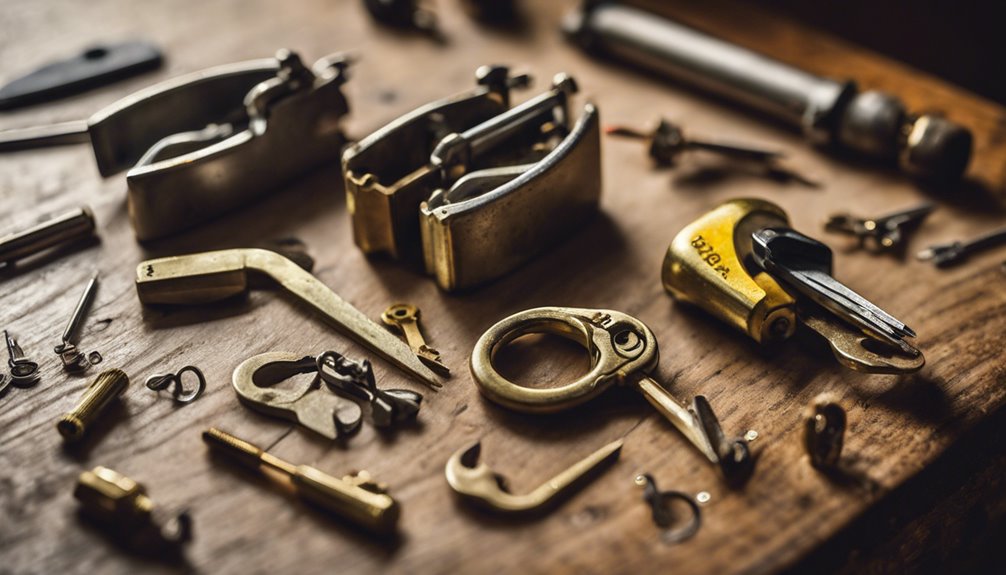
When it comes to electronic Master Locks, knowing the correct battery type is essential for ideal functionality.
You’ll need to follow specific replacement steps to guarantee your lock remains secure and reliable.
Additionally, implementing maintenance tips can extend battery longevity, decreasing the frequency of replacements.
Battery Type Specifications
Understanding battery type specifications is essential for effectively maintaining your Master locks. Knowing the specifics of the batteries will help you choose the right replacements, guaranteeing peak performance and longevity.
Here are key points to take into account:
- Voltage Rating: Always match the voltage to your lock’s requirements.
- Battery Chemistry: Pay attention to battery types (alkaline, lithium, etc.) for compatibility.
- Dimensions: Confirm the dimensions fit securely within the lock compartment.
- Terminal Configuration: Check positive and negative terminal placements for proper installation.
- Shelf Life: Opt for batteries with a longer shelf life to minimize frequent replacements.
Replacement Steps Explained
To guarantee your Master lock operates correctly, you’ll need to follow precise steps for battery replacement.
First, locate the battery compartment, usually found on the back of the lock. Using a flathead screwdriver, gently pry open the compartment cover.
Remove the old batteries, noting their orientation for correct installation of the new ones. Insert fresh batteries, ensuring the positive and negative ends align with the markings inside the compartment.
Once in place, securely close the compartment cover until it clicks into position.
Next, test the lock to confirm it’s functioning properly. If it doesn’t operate, double-check the battery orientation and connections.
Regularly replacing batteries will keep your device reliable and secure.
Maintenance Tips for Longevity
Proper maintenance is essential for prolonging the lifespan of your electronic devices, including Master locks.
Regular battery replacement guarantees your lock functions effectively. Here are some maintenance tips for longevity:
- Scheduled Check: Replace batteries every 6-12 months, depending on usage.
- Quality Batteries: Use high-quality alkaline or lithium batteries for better performance.
- Clean Contacts: Periodically clean battery contacts with a soft cloth to prevent corrosion.
- Environmental Considerations: Store locks in a dry, temperature-stable environment to avoid battery leakage.
- Test Functionality: Regularly test the lock’s operation to catch issues early.
Rekeying Master Locks
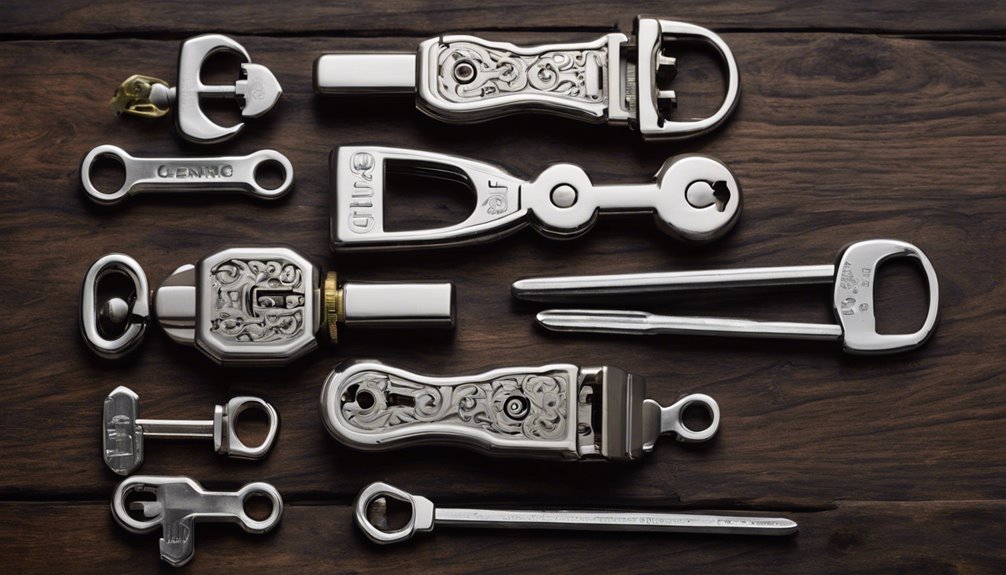
When you need to enhance security or regain control over your Master locks, rekeying is a practical solution that saves you the trouble of replacing the entire lock system.
This process involves changing the internal pins and tumblers so that your existing key will no longer work, while a new key is introduced. You’ll require a rekeying kit specific to your lock model, along with basic tools like a small screwdriver.
Begin by disassembling the lock and removing the cylinder. Replace the pins according to the new key’s cut pattern, reassemble the lock, and test it thoroughly.
Lock Lubrication Techniques

Lock lubrication plays an essential role in maintaining the functionality and longevity of your Master locks. Proper lubrication reduces wear and tear, prevents rust, and guarantees smooth operation.
Here are some effective techniques to take into account:
- Choose the Right Lubricant: Use a graphite-based or silicone spray, as they won’t attract dust and debris.
- Clean the Lock: Remove dirt and grime with a cloth before applying lubricant.
- Apply Sparingly: Use a few drops; too much can lead to buildup.
- Regular Maintenance: Lubricate your locks every six months or as needed to stay proactive.
- Test the Mechanism: After lubrication, operate the lock to guarantee smooth functionality.
Implementing these techniques will help you master the care of your locks effectively.
Electronic Lock Features
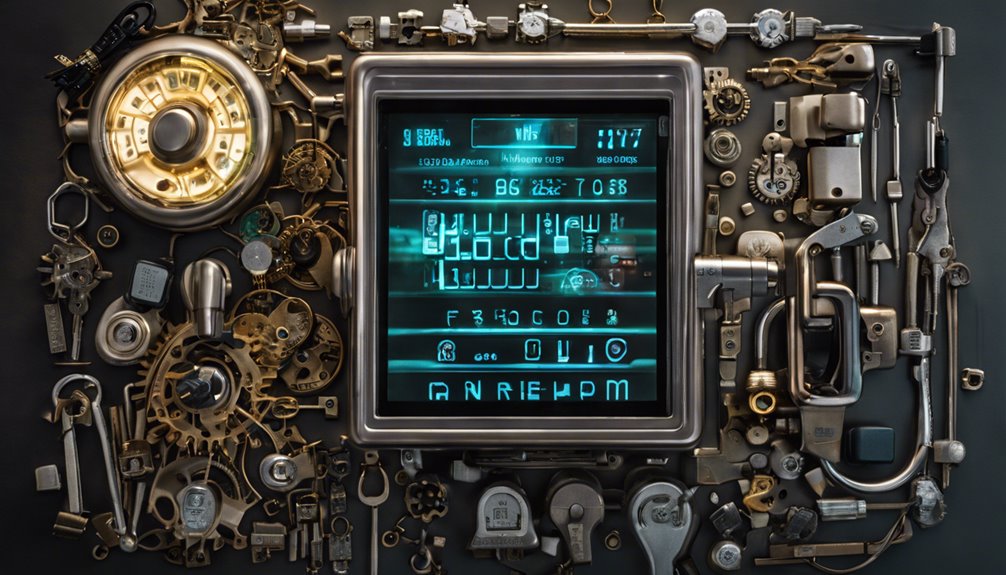
Electronic locks offer several advanced features that enhance security and user convenience. Users benefit from customizable access codes, allowing you to manage who enters your space. Integrated alarms provide alerts for unauthorized access attempts, giving you peace of mind.
Here’s a quick overview of key electronic lock features:
| Feature | Description |
|---|---|
| Keypad Entry | Secure code entry for easy access |
| Remote Management | Control locks via smartphone apps |
| Audit Trails | Track who accessed the lock and when |
| Integration with Smart Home | Connect with your home automation |
| User Access Levels | Different permissions for various users |
Troubleshooting Common Issues
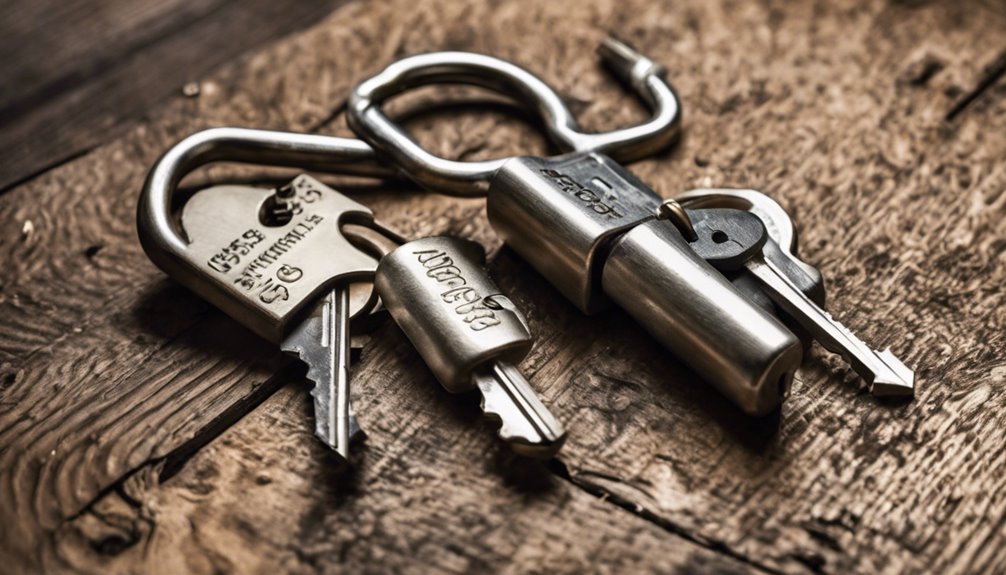
When you encounter issues with your Master lock, it’s essential to perform a combination check to guarantee you’re using the correct code.
Additionally, if your electronic lock isn’t functioning properly, a battery replacement may be necessary to restore its operation.
Let’s explore these troubleshooting steps to help you resolve common problems quickly.
Combination Check Steps
If you’re having trouble opening your Master Lock, it’s essential to systematically check the combination to verify you’re using the correct sequence.
Follow these steps to troubleshoot common issues:
- Confirm the lock’s model and its specific combination format.
- Rotate the dial multiple times to reset it before entering the combination.
- Start by turning the dial to the right (clockwise) to your first number.
- Move the dial to the left (counterclockwise) to your second number, passing the first.
- Finish by turning the dial right again to the third number.
Battery Replacement Guide
To guarantee your Master Lock operates correctly, replacing the battery is essential, especially if you notice inconsistency in its responsiveness.
Start by determining the correct battery type, typically a 9V or AAA, based on your model. Remove the lock cover using a screwdriver, then locate the battery compartment.
Disconnect the old battery, ensuring you note the orientation of the terminals. Insert the new battery firmly, aligning the positive and negative terminals as indicated.
Replace the cover and test the lock to confirm proper functionality. If issues persist, double-check battery orientation or inspect for corrosion at terminal connections.
Regular battery maintenance prevents failures and enhances long-term reliability, ensuring your lock remains secure and responsive.
Frequently Asked Questions
Can I Reset the Combination if I Forget It?
If you forget your combination, you can’t reset it without the original code or a specific mechanism for your lock type.
Some models have a re-keying feature, but not all do. You’ll need to consult the manufacturer’s instructions or contact their support for assistance.
In some cases, professional locksmiths can help, but consider that attempting to force the lock may damage it, so always explore authorized methods first.
What Should I Do if My Lock Is Rusty?
Did you know that over 70% of lock issues stem from rust and corrosion?
If your lock’s showing signs of rust, you should first clean it with a rust remover or vinegar. Scrub gently with a soft brush to avoid damage.
After cleaning, apply a silicone-based lubricant to protect it from future rust.
Regular maintenance is essential—inspect your locks periodically to prevent rust from taking hold, ensuring peak functionality over time.
Can Master Locks Be Used Outdoors?
Yes, Master locks can be used outdoors, but it’s crucial to choose the right type.
Look for those specifically designed for outdoor use, often labeled as weather-resistant or corrosion-resistant. These locks typically feature materials and coatings that withstand elements like moisture and extreme temperatures.
Regular maintenance, such as cleaning and lubricating, will further guarantee their durability.
Always check the specifications to confirm a lock’s suitability for outdoor environments before installation.
How Do I Protect Against Key Duplication?
You can’t let that heart-stopping fear of key duplication haunt you! To protect against it, choose high-security locks that come with patented keys, making duplication nearly impossible without authorization.
Additionally, you can limit access to your keys by keeping them in a secure location or using a key vault. Always stay vigilant about who you give spare keys to, and consider using keyless entry systems for added security and peace of mind.
Are Master Locks Resistant to Weather Elements?
Master locks are designed to resist various weather elements, including rain, snow, and extreme temperatures.
Their materials, such as hardened steel and protective coatings, minimize rust and corrosion risk.
However, you should regularly inspect and maintain them to guarantee peak performance.
Lubricating the lock mechanism with suitable products can further enhance its durability and functionality in adverse conditions, allowing you to rely on it regardless of the weather challenges you face.
Conclusion
In conclusion, mastering Master Locks requires a blend of precision and preventive practices. By understanding the unique mechanisms, employing effective opening techniques, and prioritizing proper maintenance, you can safeguard your security. Remember to regularly check and care for your locks to guarantee reliability and resilience. With diligence and dedication, you’ll enjoy lasting lock function and peace of mind, making your Master Locks a trustworthy partner in protection. So, keep your locks in top shape for peak operation!

